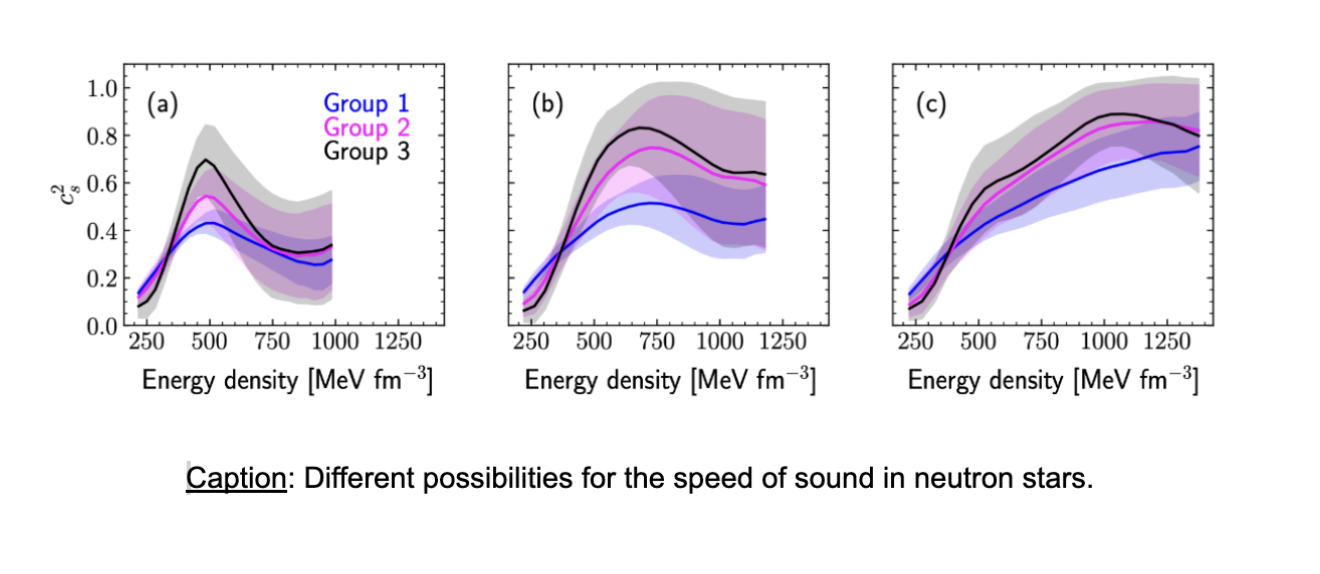Investigating signatures of phase transitions in neutron-star cores: Rahul Somasundaram, Ingo Tews and Jérôme Margueron
Phys. Rev. C 107 (2023) 025801Einstein’s theory of gravity tells us that when matter is compressed beyond a certain density, it collapses into a black hole: extraordinary regions of space-time from which no information can escape. However, what happens to matter that is on the verge of such a collapse? What is it made of? In other words, what is the nature of the densest matter that can exist in the universe? That is the question we have explored in this paper by looking at neutron stars: the dead remnants of certain massive stars that harbor such dense matter in their cores.
It is possible that matter in the inner cores of neutron stars is made up of just protons and neutrons (collectively called nucleons), i.e. not too different from what makes up nuclei that we have on Earth. However, it is possible that at such high densities, nucleons disintegrate into their constituent particles called quarks. Therefore, to see what such matter is really made of, we calculated how fast sound waves propagate inside neutron stars. It turns out that sound travels faster in nucleonic matter and therefore small sound speeds could be evidence of quark matter. Our calculations revealed that present theoretical models and the experimental data that we have on neutron stars are not conclusive regarding the constituents of dense matter. However, as we show in the paper, with both theoretical and experimental advances expected soon, we will be able to discern the nature of such dense matter in the near future. So stay tuned!
